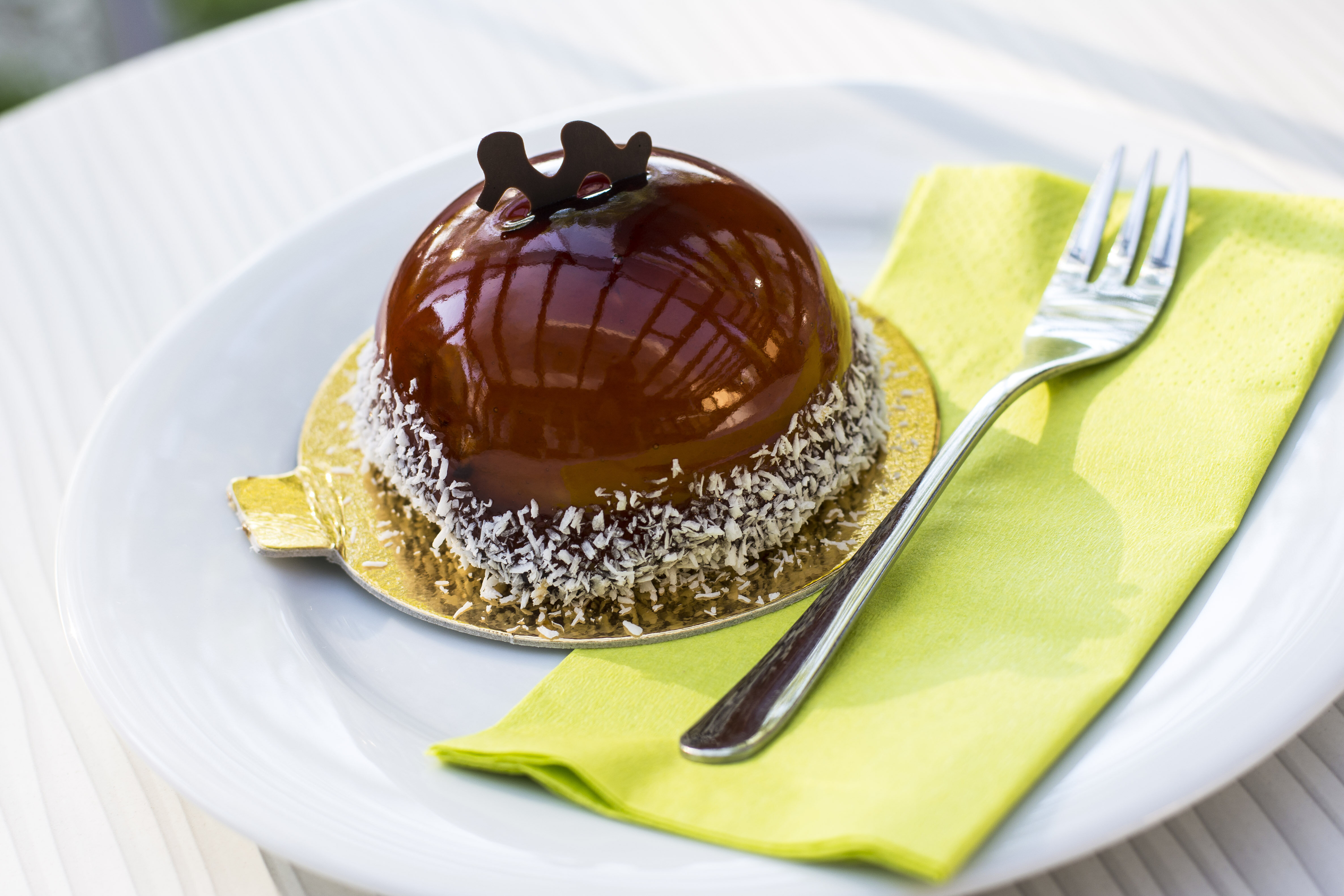- Hi! Excuse me, can you tell us how to get to Villa Gréta Confectionery?
- Um, Villa Gréta, I’ve heard about it, maybe it’s that way, but I’ll ask Feri. Feri, listen, where is this place?
- Which place? Villa Gréta? No idea.
- It’s some kind of confectionery…
- Yeah, it’s that way, just go down Petőfi Promenade, and it’s going to be on your right. It’s a white building, you can’t miss it.
And with that, Lajos Szilágyi and his business partner/master confectioner/wife Ágnes have already achieved their aim. It’s yet to be determined whether theirs is a success story, but we can already tell that they are worth talking about. They gave up everything, purchased an old, socialist realist building in Siófok, which they had revamped, and moved the confectionery to the ground floor. Now they are waiting for the magic to happen.
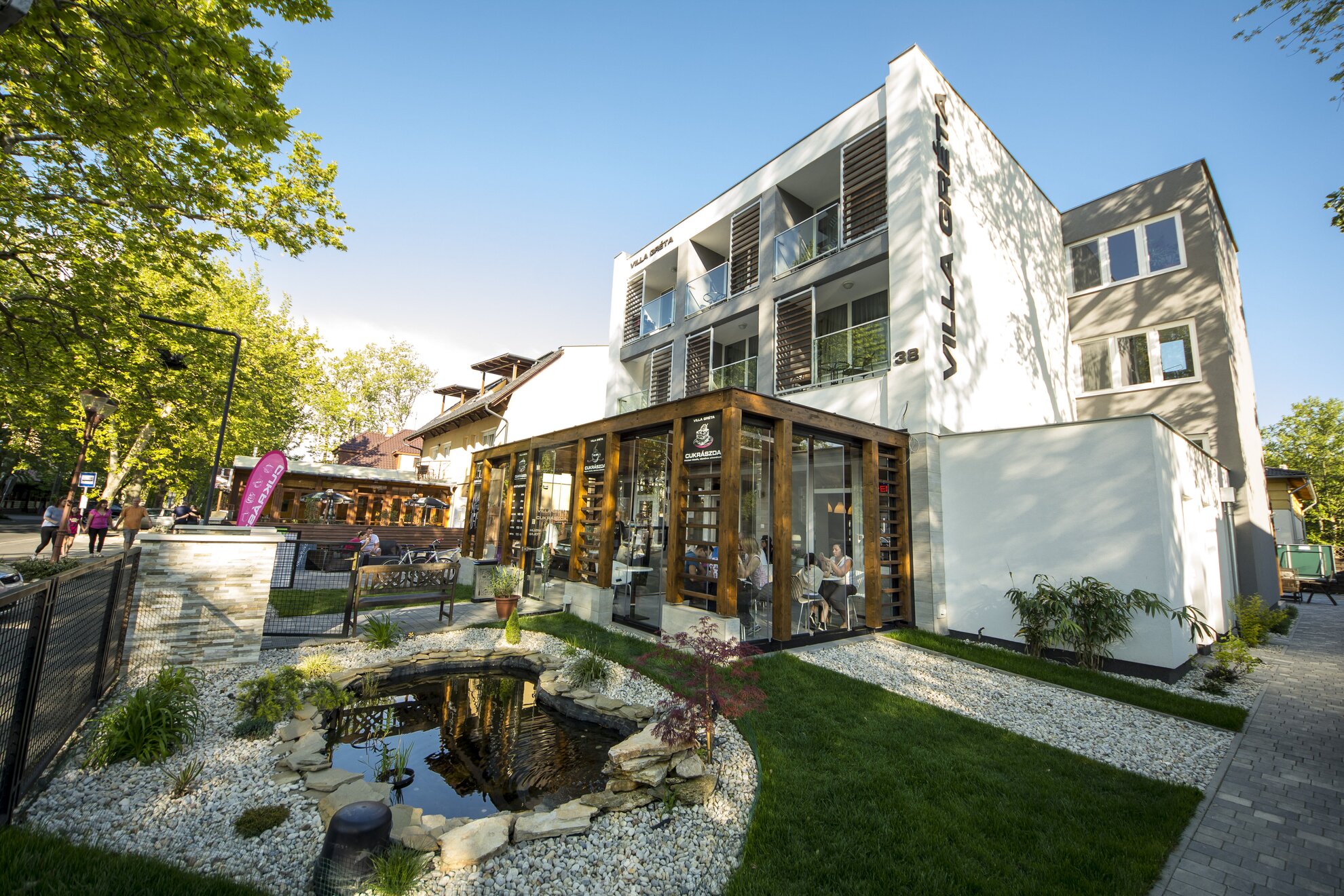
And magic comes knocking every day: the confectionery is always full of customers, despite the fact that they don't really put out advertisements because they can hardly cope with the current workload. And it’s only May; the season hasn’t even started yet. The above conversation we had with two waiters working at a restaurant nearby proves that Villa Gréta actually strives to stay under the radar, but it nevertheless has a considerable fan base.
"We're kind of doing it all backwards"
We can personally attest to the fact that their cakes are amazing. They pay attention to smallest details, and the ingredients are, of course, all local and homemade. We sampled two creations, both costing 550 forints: Gréta slice, which you can see in the picture below, and a tasty concoction with caramel and coconut. The first cake had a very light texture, which kind of reminded us of the traditional Hungarian “oroszkrém” cake, except it was also packed with candied and other kinds of fruit. The other sweet treat with caramel and coconut was sheer heaven: the oozy dark chocolate center was perfect, and we needn’t have worried about the caramel coating being too sweet.
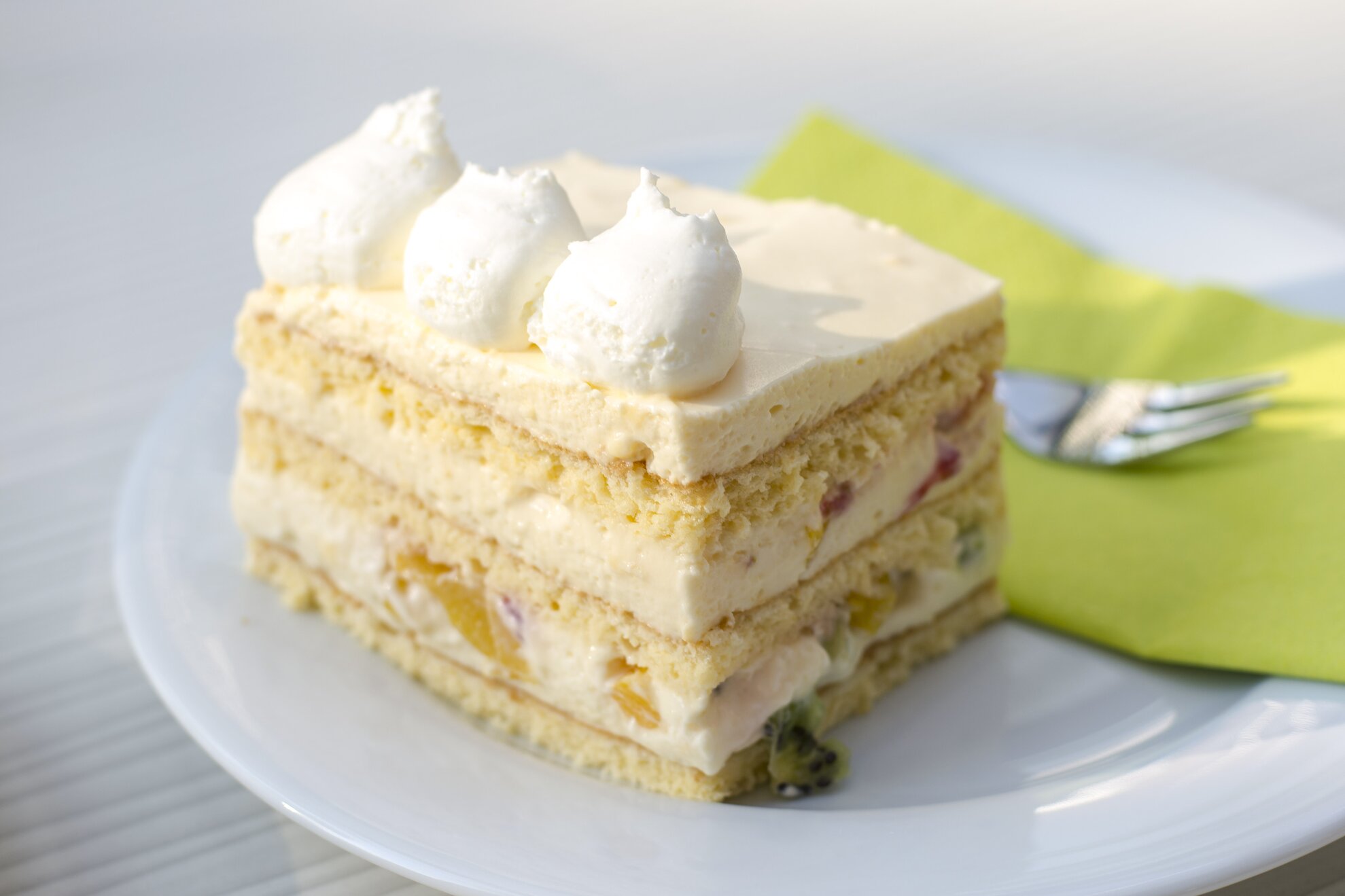
It was the expertise of Ági Szilágyi that earned the confectionery such high acclaim. Her husband told us that the caramel-coconut cake we loved so much was actually their very first hit. The recipes are all original, and the bicycle bell shape seems to be a special favorite here.
Instead of traditional, homestyle cakes, the selection includes about eight kinds of delicate, detailed creations. They also make whole cakes on request; the owner told us a customer had just picked up a big order before we arrived. Business was slow at first, and when the confectionery opened in October, many people predicted that it won’t last past winter. “We're kind of doing it all backwards,” explains Lajos, who says they simply want to give people something good. It may sound unbelievable, but they don’t do it for the profit, which is also apparent from the way Lajos has a smile and a kind word for every customer.
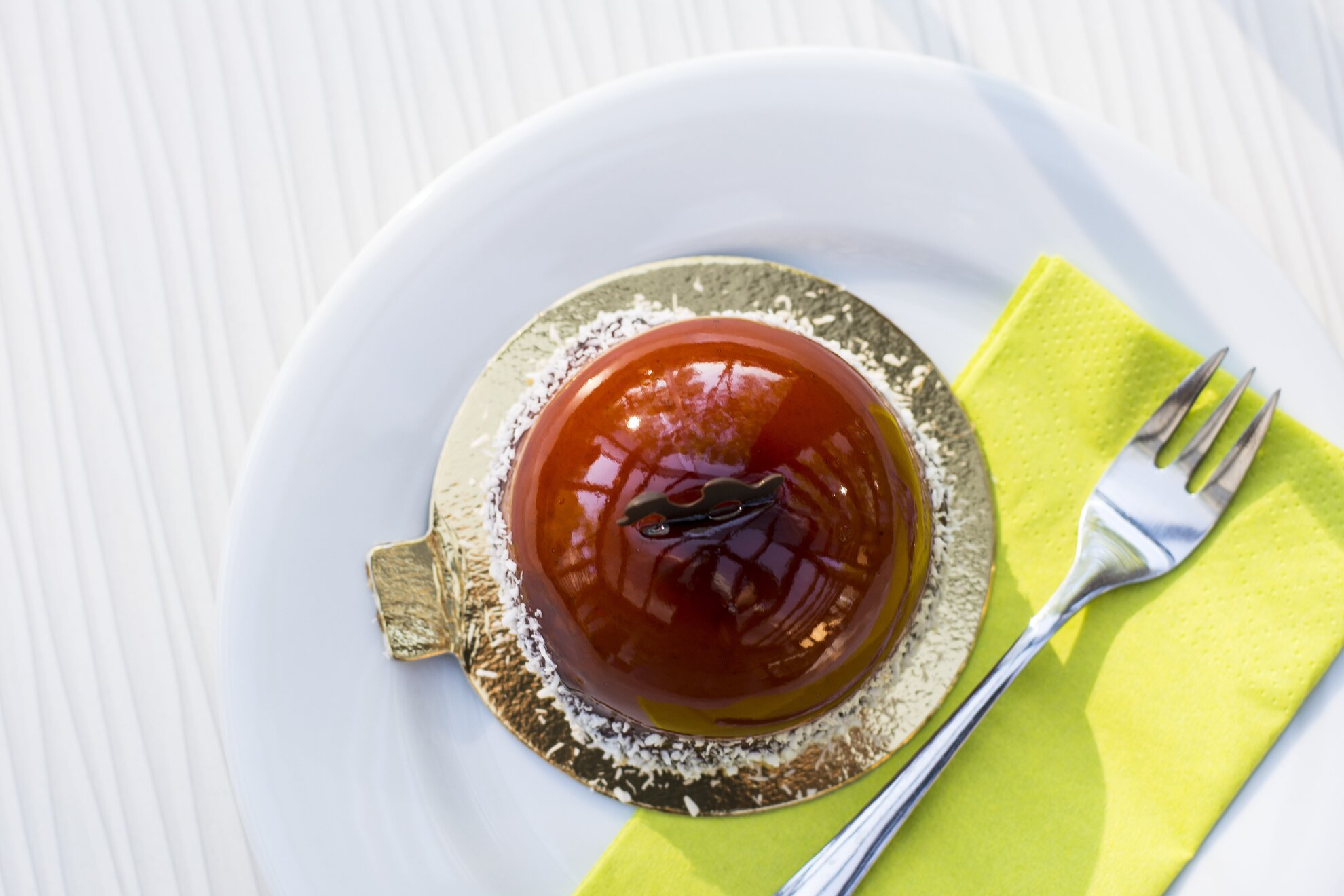
Nagykőrös goes to Balaton
The Szilágyis used to live in Nagykőrös, and Ágnes did a lot of baking at home. Whenever she whipped up an excellent profiterole or some other complicated confection, her husband, a children’s book publisher, would always say wasting such talent would be a real shame. One day Ági finally agreed to give up everything they had, buy a dilapidated house on Siófok’s Petőfi Promenade, have it done up, and turn it into a confectionery. Coming up with a moniker was really easy: the cake shop opened on October 8, and was named after Gréta, the daughter of the owners.
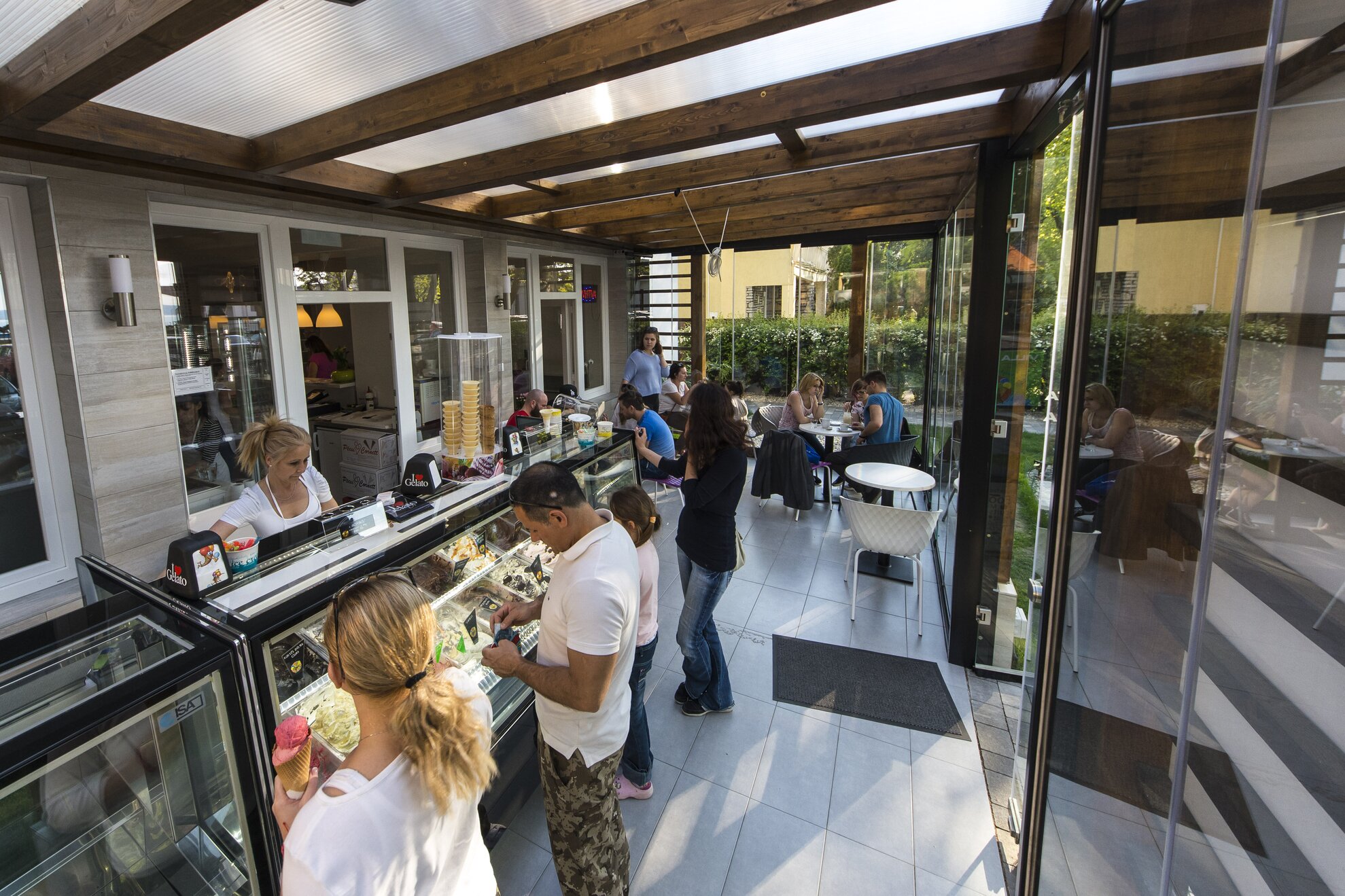
When they were thinking about the design, they immediately rejected the “Balaton Zen” style. As Lajos Szilágyi puts it: “here at Balaton everything is brown and the chairs are all made of rattan”. They asked an acquaintance to help them design the white and bright interior with the colorful dots on the wall, which goes very well with the modern and clean white of the exterior.
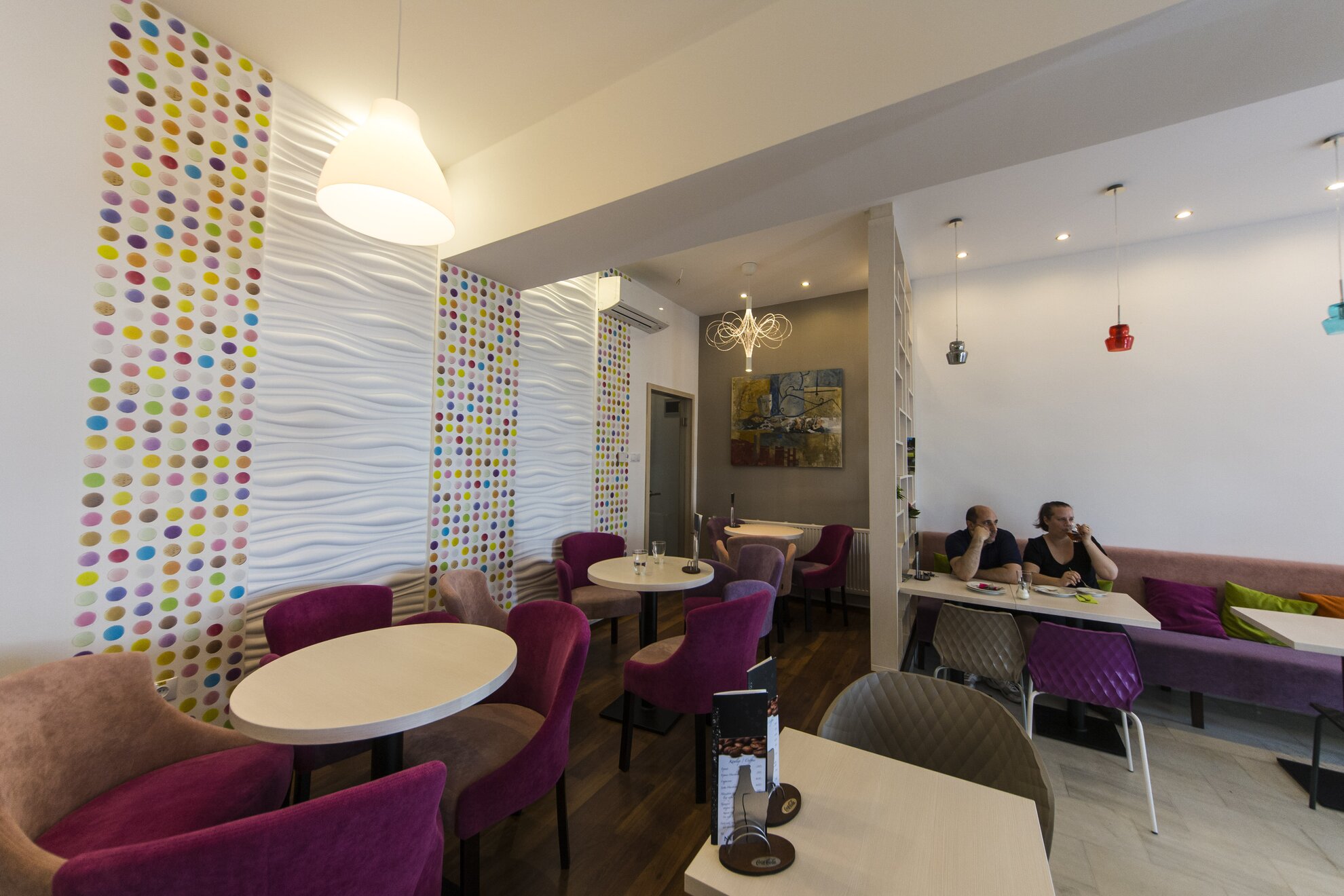
Where future and present meet
“Ági’s skill is our strength, but it also places certain restrictions on us,” says Lajos Szilágyi, meaning that his wife can only bake so many cakes in one day. At busier times her speed is tested to the absolute limit. They are already struggling to keep pace with the flood of patrons, so they don’t pay for advertisements; all they rely on is word of mouth and social media.
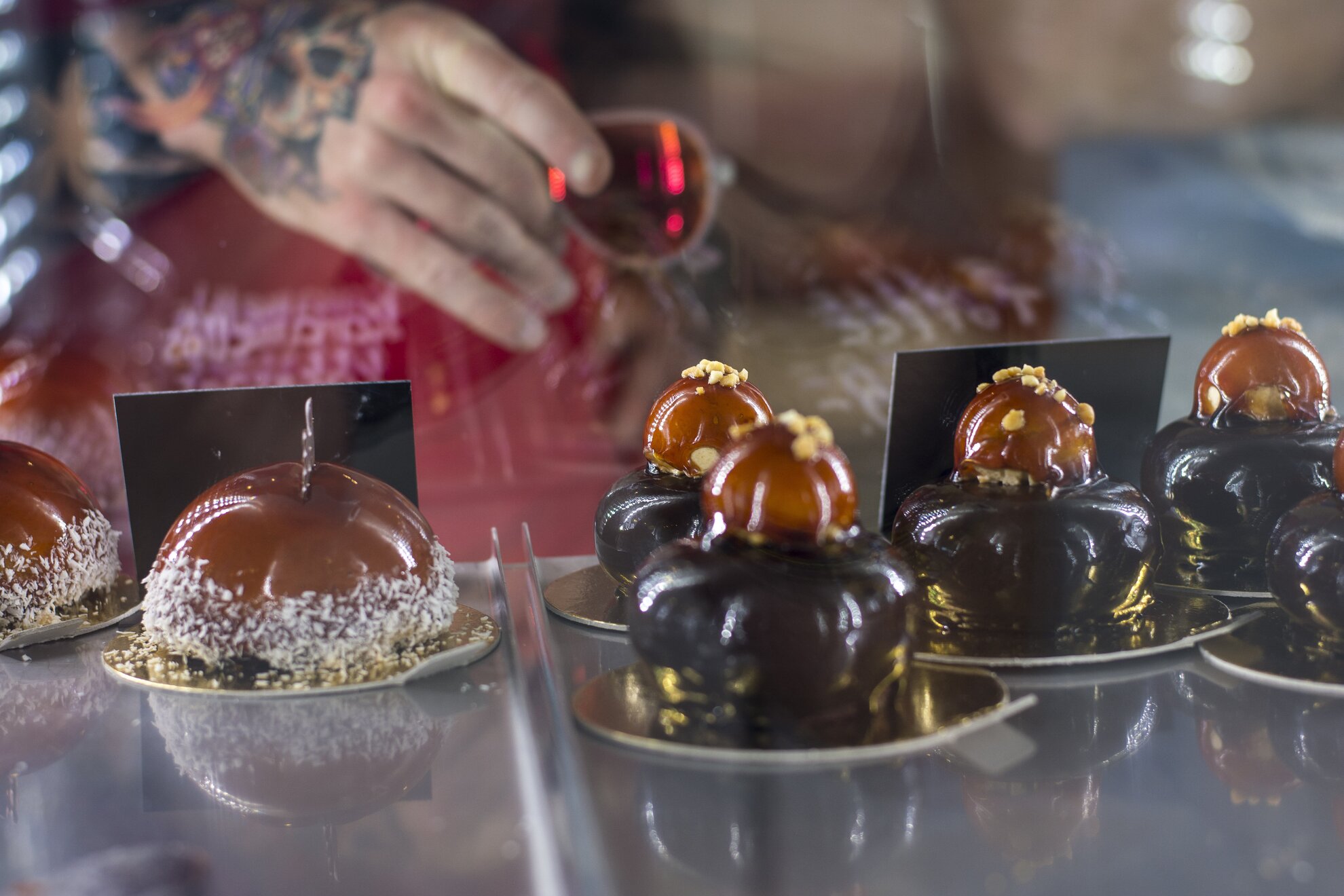
Ági Szilágyi has been recently invited to present her methods in front of a bunch of chefs at Budapest’s Four Seasons; news of the confectionery reached the capital city, and she was asked to design a dessert to go with a dry red wine. Other chefs suggested that they should raise their prices and switch to larger-scale production in the long run, but the Szilágyis don’t want to do anything like that. For the new season they’re coming out with several new recipes and 32 kinds of ice cream, and they’re also going to change their current opening hours, welcoming guests between 10am and 8pm in the summer.

